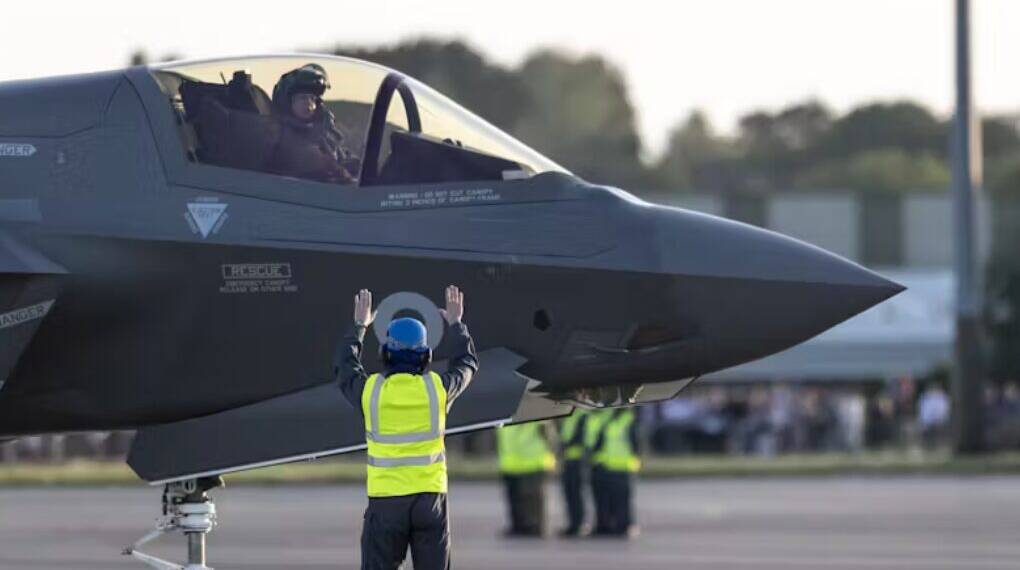The recent saga of the British Royal Navy’s F-35B stealth fighter jet stranded in Kerala for over five weeks has sparked significant discussion about operational challenges, international cooperation, and the strategic image of cutting-edge military technology. Grounded at Thiruvananthapuram International Airport since mid-June following an emergency landing caused by a hydraulic fault amid adverse weather, the aircraft finally departed on July 22 after extensive repairs.
Technical Setbacks and Logistical Complexities
The F-35B, renowned for its advanced fifth-generation stealth capabilities and praised for short takeoff and vertical landing (STOVL) performance from aircraft carriers, encountered unexpected difficulties while en route from the UK to Australia.
Roughly 100 nautical miles off the Kerala coast, the fighter developed a critical fault that forced its pilot to divert to the nearest available airport—a move underscored by low fuel and challenging weather conditions. The Indian Air Force (IAF), demonstrating effective bilateral cooperation, facilitated its emergency landing and provided vital logistical support throughout the prolonged stay.
However, what followed exposed the complexities involved in repairing such a sophisticated military asset far from home bases. The fault, primarily hydraulic in nature, required an expert UK-based engineering team, which arrived with specialized equipment not available in India— a significant logistical hurdle, given that India does not operate any F-35 aircraft.
The jet was moved to a secure hangar on July 6 using specially flown-in tools and the efforts of a 24-strong technical contingent from the Royal Air Force and Royal Navy.
Despite initial inspections and repair attempts, progress was slow and meticulous. The need to thoroughly assess, repair, and validate the fighter’s safety before resuming flight meant the jet remained grounded for 39 days — a considerable duration that provoked intensive scrutiny and public interest.
Diplomatic and Financial Dimensions
The incident unfolded against a backdrop of increasing UK-India defence cooperation, with the F-35B operating as part of the HMS Prince of Wales Carrier Strike Group engaged in the Indo-Pacific region alongside Indian Navy exercises.
The British High Commission expressed gratitude towards Indian authorities and airport teams for their support during this complicated process, signaling ongoing efforts to deepen defence ties despite operational setbacks.
Financially, the jet’s extended stay in Kerala was far from inexpensive. Reports indicate that daily airport parking charges alone amounted to over Rs 26,000 (roughly $320), culminating in an approximate total bill exceeding Rs 9 lakh (over $11,000) for the 35-day period. This highlights the often-overlooked logistical costs and infrastructure challenges when deploying high-value military assets globally.
The event also triggered considerable local interest, spawning social media discussions and memes, with Kerala Tourism humorously branding the jet as “Kerala, the destination you’ll never want to leave,” reflecting the aircraft’s extended, unplanned sojourn.
Strategic and Symbolic Implications
This episode presents a nuanced challenge to perceptions of modern military technology. The F-35 program, valued at over $110 million per aircraft, is often touted as the pinnacle of stealth and strike capability. That such an advanced platform became essentially immobilized for more than a month due to a hydraulic fault—and the subsequent logistical complexity in remote repairs—underscores the vulnerabilities even the most sophisticated fighters face when operating far from established support networks.
Additionally, the episode underscores the critical importance of international defence partnerships and logistical interoperability. The cooperation between the UK and Indian forces, culminating in the successful repair and departure of the stranded jet, highlights both nations’ growing strategic alignment, particularly within the broader context of Indo-Pacific security.
Yet, the incident also raises questions about the readiness and resilience of state-of-the-art military assets in prolonged deployments. Given the considerable strategic importance placed on the F-35B within the UK’s carrier strike capability, scenarios of extended technical failure in forward areas could be problematic in a real conflict, where timely maintenance and rapid response are paramount.
Also Read: Why F-35 Didn’t Return from Kerala, India? The Hidden Flaws in UK’s Defence Tech Exposed
The F-35B’s 39-day grounding in Kerala serves as a revealing case study in the operational challenges faced by advanced military platforms in increasingly distant theaters. While the incident was resolved successfully thanks to cooperation between British and Indian teams, it highlights the considerable technical, logistical, and financial hurdles involved in sustaining cutting-edge assets during global deployments.
In a world where stealth fighters like the F-35B embody high-tech military power, this episode grounds expectations—reminding analysts and defence planners alike that complexity, contingency, and partnership remain vital pillars behind any operational success.








